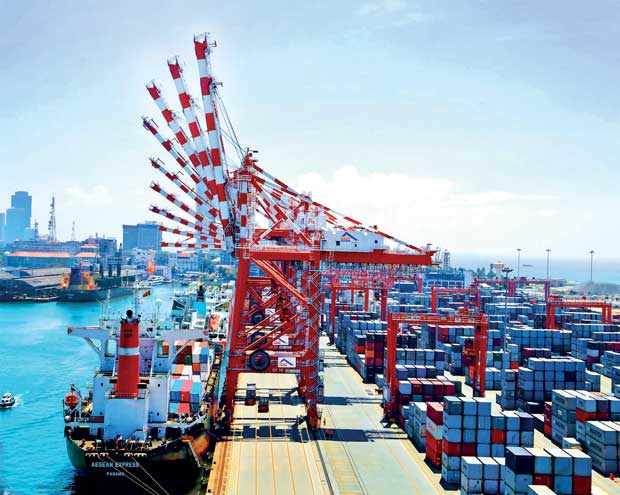12 Jul 2017 - {{hitsCtrl.values.hits}}

By Oxford Business Group
The recent decision by the European Union (EU) to reinstate Sri Lanka to its tariff exemption scheme, designed to assist developing countries in achieving the upper middle income status, should serve to boost exports and generate renewed private sector investment.
On May 19, the EU formally restored Sri Lanka to the ranks of countries that benefit from the enhanced Generalised System of Preferences Plus (GSP Plus), which provides additional tariff preferences.
The move was an acknowledgement that the country had committed to ratifying and implementing 27 international conventions covering issues such as human rights, labour conditions, environmental protection and good governance.
Breaking trade barriers
The restoration of Sri Lanka’s GSP Plus status means tariffs on more than 6000 products have been removed, with the complete lifting of duties on some two thirds of all tariff lines.
Sri Lanka’s GSP Plus status was revoked in 2010, five years after first being granted. The cancellation came as a result of a ruling by the European Commission following the adverse findings of an investigation into allegations of human rights abuses at the end of the country’s civil war.
While Sri Lankan exports retained some concessions under the standard GSP scheme, it was the ‘Plus’ that conferred many of the advantages that allowed its goods and services to be successfully exported to the bloc.
Though noting that Sri Lanka still had much to do in the way of strengthening rights and eliminating discrimination, EU Trade Commissioner Cecilia Malmström said the reinstituting of GSP Plus was a recognition of the advances made in reinforcing human and labour rights.
“It is also a vote of confidence from the EU that the Sri Lankan government will maintain the progress it has made in implementing the international conventions,” she said on May 16, ahead of the announcement.
Opening EU doors
The European bloc is already Sri Lanka’s largest export market, with more than 30 percent of all outbound shipments going to the EU.
The easing of the tariff barriers will likely serve to increase trade flows even further, to Sri Lanka’s benefit. Of the nearly € 4 billion in bilateral trade recorded last year, Sri Lankan exports to the EU member states accounted for € 2.6 billion, giving it a strong trade surplus.
With some estimates putting the immediate boost in revenue from the lifting of many of the tariffs at € 300 million and the opening up European markets to Sri Lankan products set to increase this further, prospects for local exporters are on the rise. Potential for trade growth if Sri Lanka’s exports to the EU resume their pre 2010 levels, there could be a surge in growth in a number of key primary and secondary industries.
In the five years prior to the revocation of Sri Lanka’s GSP Plus privileges, the country’s exports to the bloc rose at an average annual rate of 16.4 percent. While exports have continued to increase in the years, since this rate of growth has been less than half the 2005 09 level, albeit at a still robust 7.4 percent per annum.
The expected boost in shipments to the EU is timely for Sri Lanka, which has seen its overall exports ease in recent years.
Outbound shipments fell by 2.2 percent in value terms in 2016, dipping to US $ 10.3 billion. This was down from the US $ 10.5 billion posted the previous year, a result which itself represented a 5.6 percent decline on 2014.
This easing of exports contributed to a widening trade deficit, which reached 11.2 percent of gross domestic product (GDP) in 2016, up from 10.4 percent the previous year, according to the Central Bank data. By end 2016, the trade shortfall had risen from US $ 8.4 billion to US $ 9.1 billion.
In addition to reviving its trade metrics, Sri Lanka’s return to the GSP Plus fold should also spur investment in some key sectors – particularly textiles and agriculture, which account for the bulk of current shipments to the EU.
Private sector investment is already on the rise as confidence in the economy gains pace. With the added incentives of an open door to the EU markets, there could be a further increase in spending on export focused production.
Double edge sword
However, as was demonstrated in 2010, GSP Plus concessions are not fixed and remain subject to constant monitoring and revision. Should Sri Lanka’s progress towards meeting international and the EU criteria wane, it could put its status at risk again.
Furthermore, under the EU trade regulations, any country benefitting from the GSP Plus scheme that achieves and maintains upper middle income-country status for three years is deemed to be economically advanced enough to not need the additional support and is therefore removed from the scheme.
Even with some estimates suggesting Sri Lanka could achieve this status in the next few years, the country’s economy is likely to enjoy, at a minimum, half a decade or more of privileged access to the EU market, allowing producers and exporters to further build capacity and cement trade links with Europe.
10 Jan 2025 58 minute ago
10 Jan 2025 1 hours ago
10 Jan 2025 2 hours ago
10 Jan 2025 3 hours ago
10 Jan 2025 3 hours ago